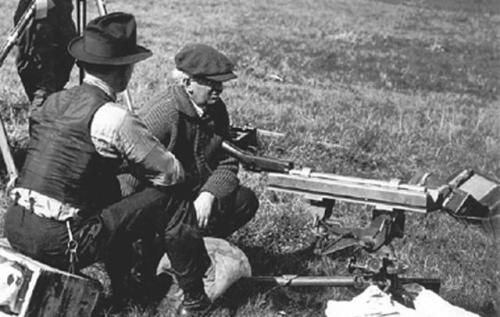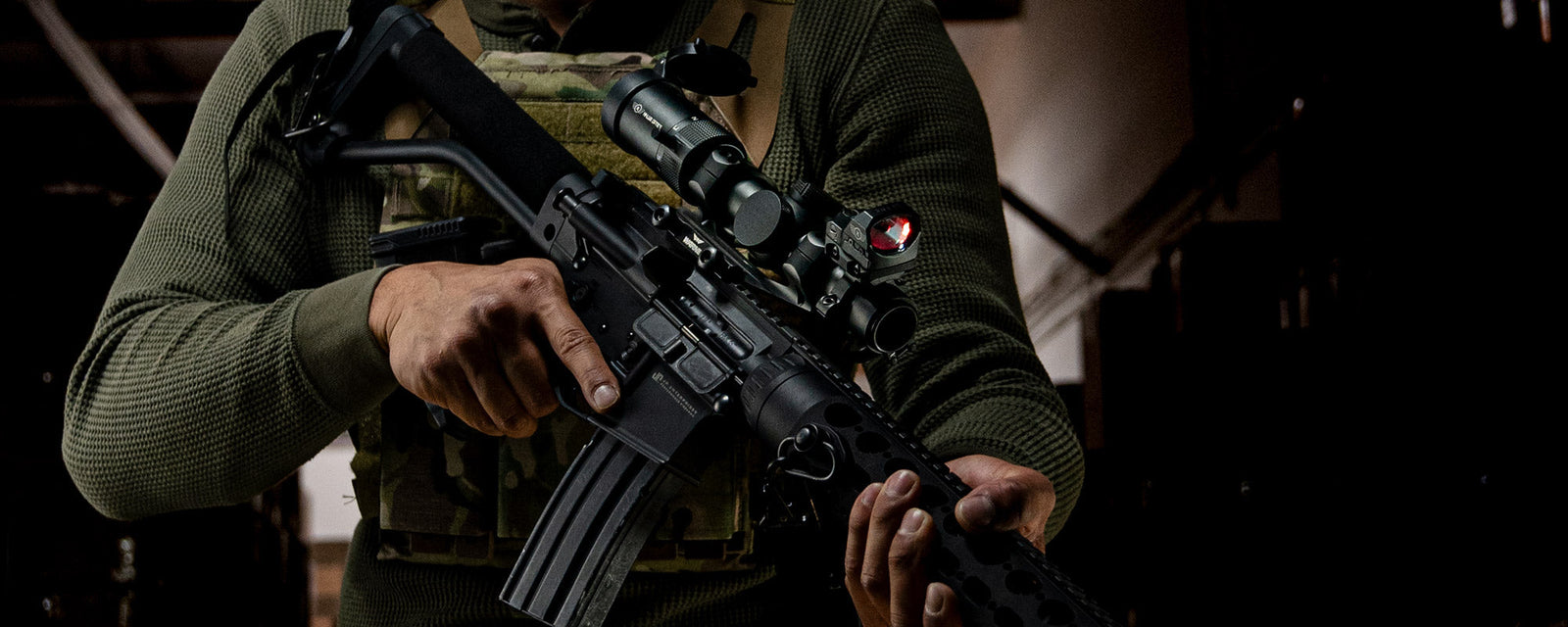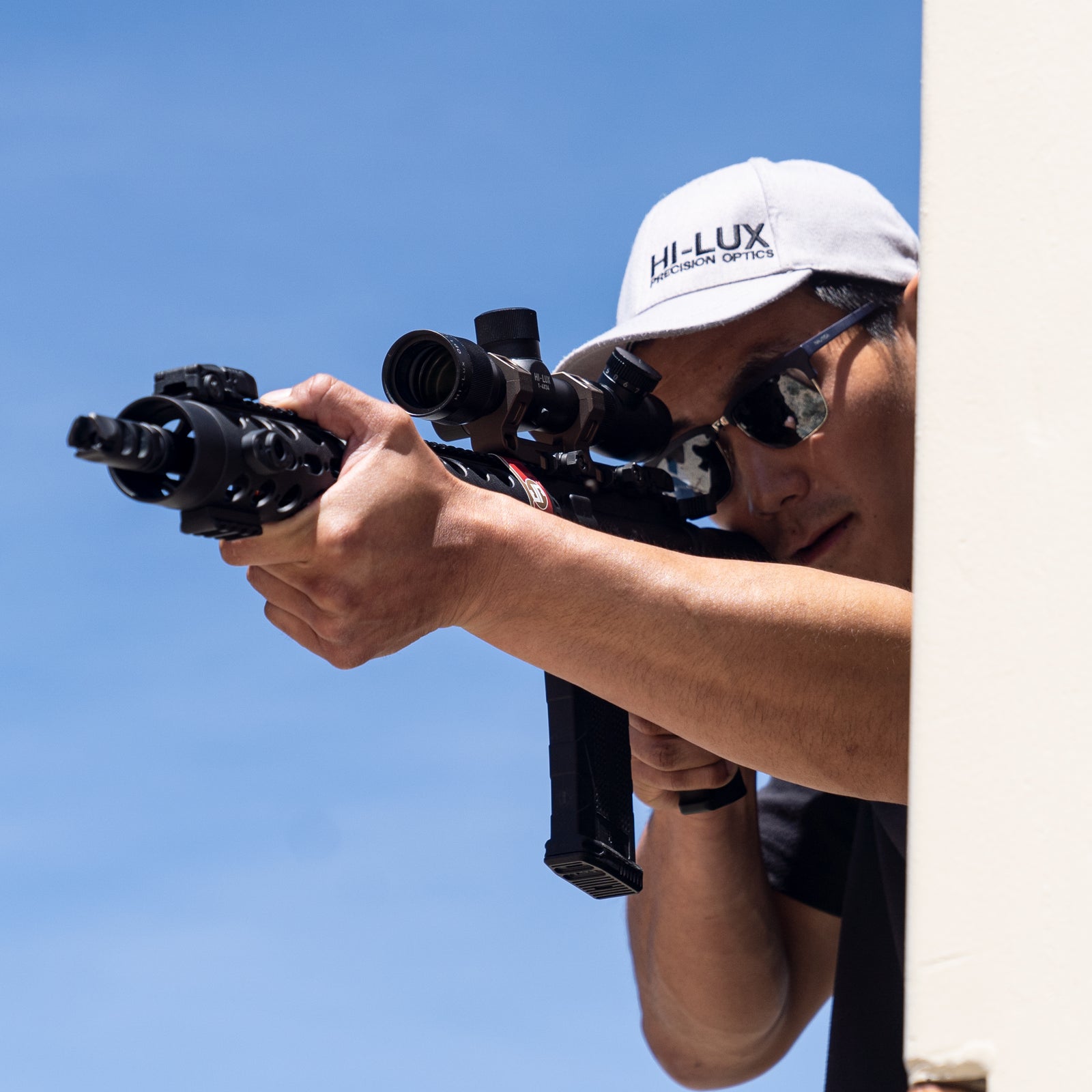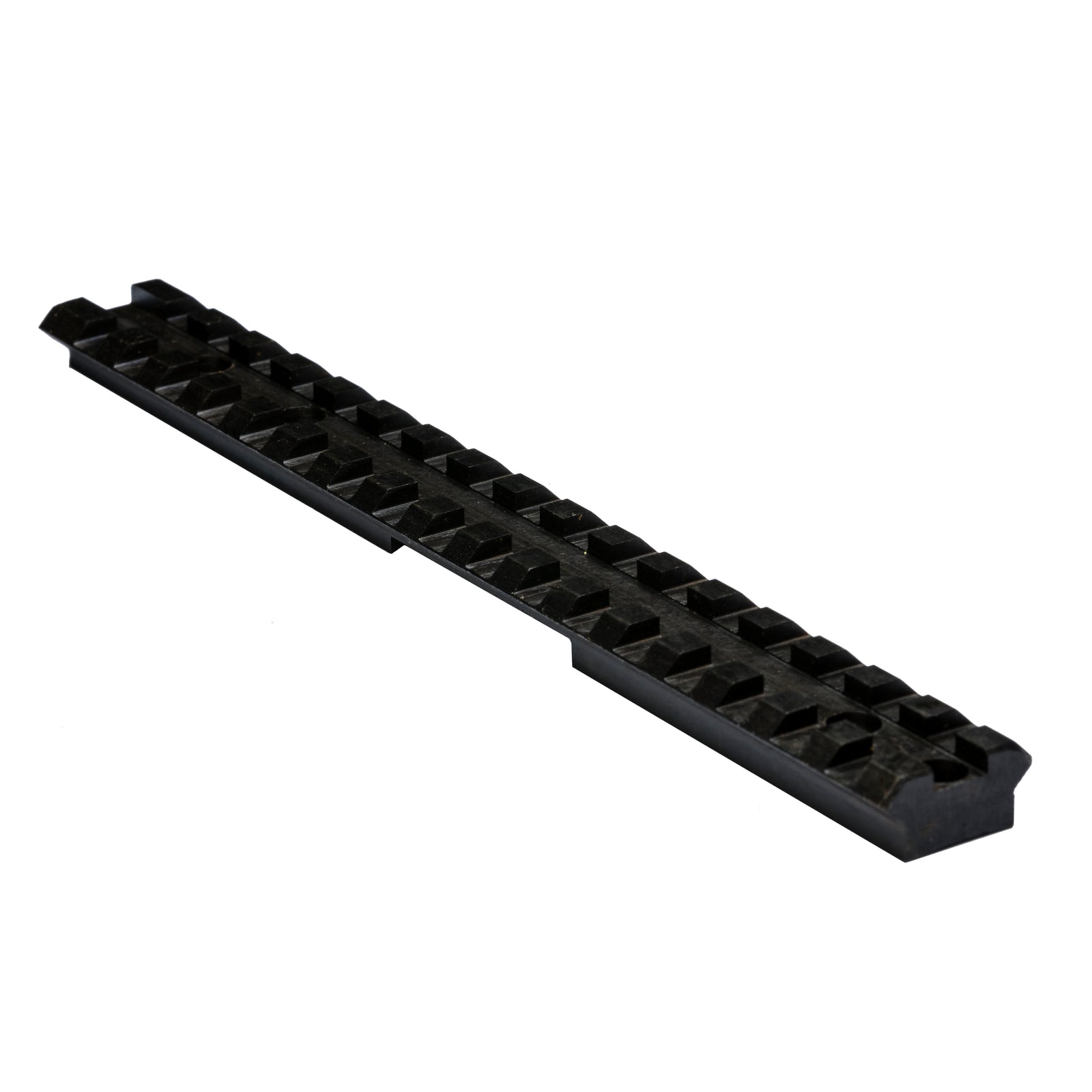The Mann Accuracy Device.
I’m not sure how to introduce these peculiar almost-rifles. Let’s start with the basics.

For most of the shots you take with a rifle, you, the ‘squishy human component,’ are responsible for much of the lost accuracy. The rifle and ammunition have their own inherent precision, and their own chance of sending a shot wide. Normally, though, your positioning, trigger pull, timing, and a whole host of other factors are responsible for sending a shot to the wrong place. If you’ve ever shot offhand, you’ll know exactly what I’m talking about.
Now imagine that we’ve removed the human from the equation. The rifle’s going to be held by something else, so your shoulder and hands don’t need a stable platform. Remove the foreguard and most of the buttstock. The point of this rifle is repeatable precision testing. You don’t need to aim for this, as long as the rifle stays pointed at the same spot for each shot. Remove the sights too.

To lower the effects of recoil, especially on the barrel, the barrel should be made quite thick. You won’t need to be supporting it, either, so it can be as imbalanced as you like. Make the barrel hefty and sturdy, from breech to muzzle.
Now the rifle needs a platform to support it, and some way to get it pointed at the target from the start. Here’s the real fun part of this setup. Imagine a trough on an adjustable base. A heavy, thick, solid wooden trough set atop an adjustable steel frame. If you look down the trough, you can point it at the target (not unlike boresighting). With the trough locked in place, the rifle can be laid in the trough to point at the target. To keep everything in line, the rifle is put into the trough upside down, so that only the barrel is contacting the support surfaces. With a barrel of even dimensions down the whole length, this is a pretty repeatable alignment. You might install perfectly concentric lugs on the barrel, which fit into grooves in the trough.
After that, just sit back and pull the trigger with a string.

This is the idea behind a Mann Accuracy Device. It was named after ammunition tester Dr. F. W. Mann. Dr. Mann was also famous for the invention of the V-shaped cast iron cradle used for ammunition testing, later referred to as the “Mann Rest.”
These rifles, if you want to call them that, were built to test ammunition. Utilizing Springfield 1903A3 rifles with a completely redesigned barrel, relatively few of these devices were ever made. They were chambered in a few cartridges, most of which you’re probably familiar with. Just like the 1903, some were built to test .30-06. Others were made for .22 Hornet, .30 Caliber Carbine, and 7.62mm.
If you wanted to test the inherent precision of ammunition, I couldn’t think of a better way. This setup removed the shooter from the equation - along with a fair portion of the rifle. Sighting in wasn’t even considered - once the rifle was on target, it was meant to stay pointing at the exact same spot round after round.
I’d like to finish out by reading a passage from Mann’s book, “The bullet’s flight from powder to target.”, from the chapter “The personal element vs. Mechanical Rifle Shooting.”
“Target shooting by sighting with rifle held in the hands, butt against shoulder, or with rifle held on a rest, is universally a method the whole object of which is to hit a given point or target. This is rifle shooting in which the personal element enters to a great extent. Mechanical rifle shooting eliminates at once the personal factor as far as possible, for the rifle barrel rests upon a fixed base.
“But the main distinction, which should be clearly understood, lies in the fact that in this mechanical shooting no attempt is made to hit anything like a mark, the object being to have the shots print on the paper wherever natural laws throw them, and to have the line of fire remain the same from shot to shot.”
--
We hope you’ve enjoyed this look into the world of firearms. If you’d like to view this in a different format, it’s available in other convenient locations. If you’d like to hear the podcast, you can find it at The Bullet:In. For the video version, take a peek on our YouTube or Rumble.
If you're interested in the development of other rifles, take a peek at:





CavDad1775
February 17, 2025
And CMP as of January 2, 2025 has an example up for auction: https://cmpauction.thecmp.org/catalog.asp?catid=364&n=Bolt-Action-Rifles